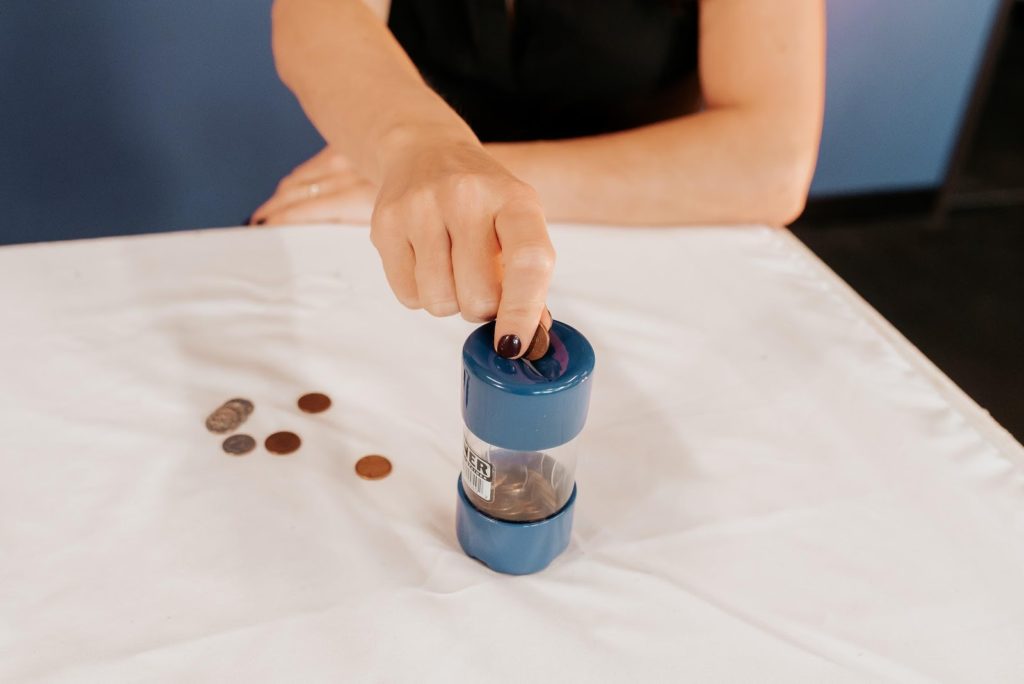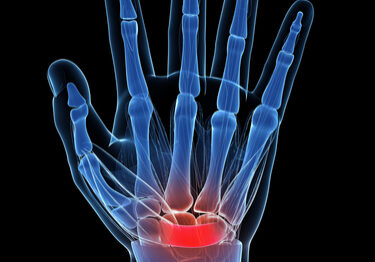By: Josh MacDonald
The Basics – I lay a pile of small objects on the table and an open container for the client to put them into. What object I use depends on the client’s level. We’ll get to that later. Then, they use a 2-point pincer grasp to pick up one and shift it finger-to-palm. They do this 3-4 more times. Each time, shifting it fully to the palm. Then the objects are taken, one at a time, from palm to pincer grasp and dropped into the container.
“Using translation gives me a task to work on fine motor skills and dexterity that is gradable and functional.”
Special Rules – To keep the client from cheating and to meet the purpose of the task we have a few special rules.
- No using momentum to ‘throw’ the object from palm to finger. They need to use finger and thumb motion to advance the object.
- No using gravity to let the object fall from palm to fingers. AKA: no cheating
- Take it all of the way to the tips of index and thumb. It’s harder but it matters.
Make it fit – This task is highly scalable to meet the client’s needs and the ‘just right challenge’. Here is the sequence I use as the client improves:
- Slow foam squares cut into ¾” squares
- Squares mixed with marbles (pick up 2 of each) and sorting them for sensation work.
- Mancala pieces or just plain marbles
- Coins – Pick them up off a towel if flat on a table is too much
Bonus!! – Aside from the obvious benefits there are a few other added extras that pop up. Sometimes I even use these as the primary reason for picking this task.
Supination/pronation – The forearm is pretty darn active during this whole process
Tactile work – Stereognosis and discrimination skills can be refined with this task
Thumb work – When done right, the thumb is getting a solid workout (e.g. Joint stiffness work)

Whatever you want…
This task can be converted into whatever you want it to be. Use dice to play a game. Use grapes or other food for a self-feeding goal. Use small beads and work on ‘storing’ the extras in the ulnar side of the palm while stringing the bead. The options are ENDLESS! This is one of my favorite tasks and I can’t wait for you to try it and tell us what you think.
1 Comments
Leave a Comment
More To Read
Occupational and Physical Therapy Continuing Education: Evidence‑Based Practice and Research Literacy
Introduction: The Role of Research in Modern Occupational and Physical Therapy In today’s healthcare landscape, staying updated isn’t a luxury—it’s a necessity. As new research floods academic journals and treatment methodologies evolve, therapists must stay ahead. This is where occupational and physical therapy continuing education comes in. More specifically, courses that emphasize evidence-based practice (EBP)…
Read MoreCarpal Tunnel Syndrome: How does traditional hand therapy compare with neurodynamic therapy?
Hamzeh, H., Mohammad, M., Alghwiri, A., & Hawamdeh, Z. (2021). The long-term effect of neurodynamics vs. exercise therapy on pain and function in people with carpal tunnel syndrome: A randomized parallel-group clinical trial. Journal of Hand Therapy, 34, 521-530. The Skinny: Carpal tunnel is the most common peripheral nerve compression problem. There is now some…
Read MoreUse of Proprioception in Rotator Cuff Repair
Article Review By Brittany Day Upper Limb Active Joint Repositioning During a Multijoint Task in Participants with and without Rotator Cuff Tendinopathy and Effect of a Rehabilitation Program Pairot de Fontenay, Benoit, Mercier, Catherine, Bouyer, Laurent, Savoie, Alexandre, & Roy, Jean-Sébastien. (2019). Upper limb active joint repositioning during a multijoint task in participants with and…
Read MoreSign-up to Get Updates Straight to Your Inbox!
Sign up with us and we will send you regular blog posts on everything hand therapy, notices every time we upload new videos and tutorials, along with handout, protocols, and other useful information.






When I worked in pediatrics in the school system, I cut aslit in a tennis ball, drew a face on it, called it Mr. Hungry. I had students translate pennies and fed Mr. Hungry. This was one of their favorite activities!